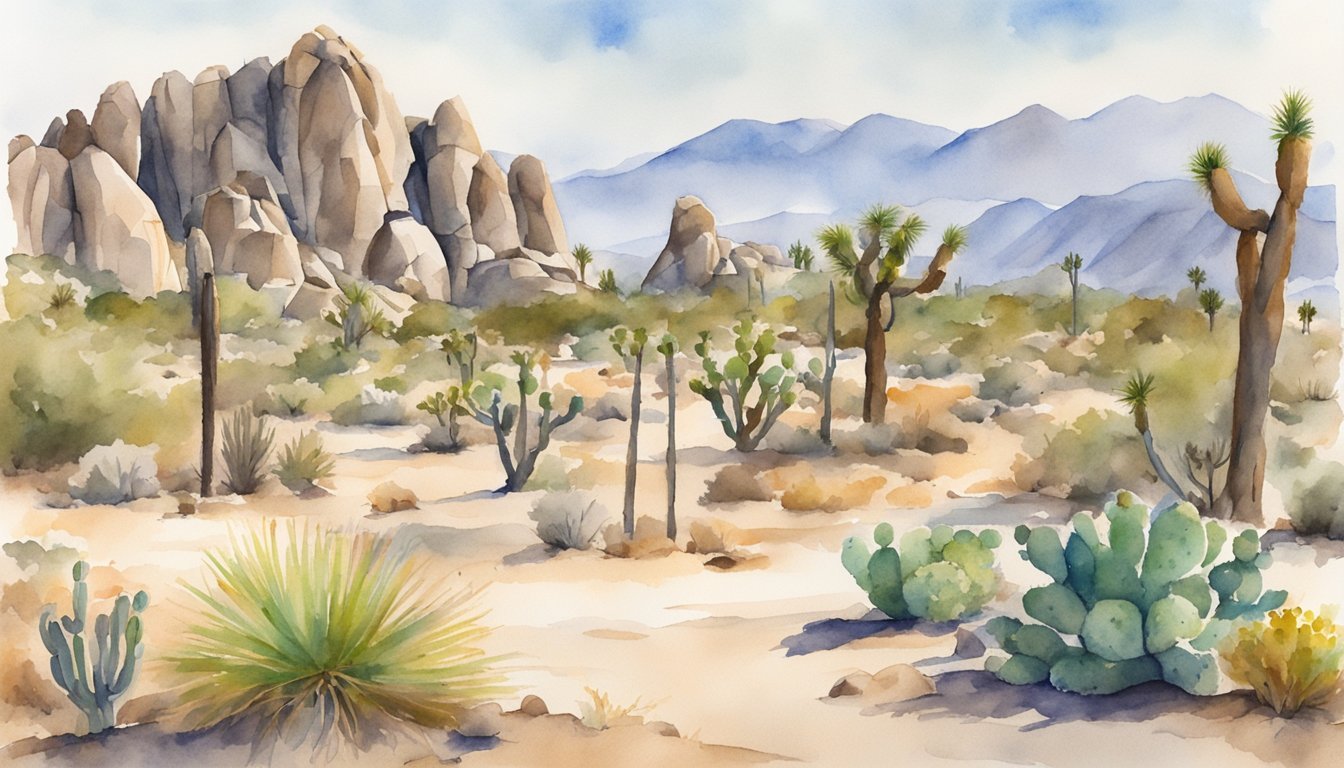Joshua Tree National Park Overview
Geographical Location
Joshua Tree National Park is a unique destination located in southeastern California, where the Mojave and Colorado deserts meet. The park is within driving distance of major cities such as Los Angeles and San Bernardino, making it a popular destination for nature lovers in Southern California.
Flora and Fauna
The park is named after its most famous resident, the Joshua tree (Yucca brevifolia), which is native to the Mojave Desert. This unique and hardy plant is well-adapted to the harsh desert environment and contributes to the park’s distinctive ecosystem. Aside from Joshua trees, the park is home to a diverse range of plant and animal species that thrive in both the Mojave and Colorado desert ecosystems. Keep an eye out for fascinating animals such as bighorn sheep, desert tortoises, and various species of birds.
Historical Significance
Joshua Tree National Park has a rich history, dating back to its time as a national monument in 1936. The park was redesignated as a national park in 1994, thanks to the efforts of the U.S. Congress, who recognized the importance of preserving this unique area. The park has long been revered by Native American tribes and was later frequented by miners and ranchers. Today, it stands as a testament to the resilience of nature and the value of conservation in the United States.
Recreational Activities
There is no shortage of recreational activities for visitors to enjoy at Joshua Tree National Park. Here are a few popular options:
- Hiking: With over 8,000 climbing routes, Joshua Tree is a popular destination for rock climbers of all skill levels. In addition, the park offers numerous hiking trails that showcase its stunning desert landscapes.
- Stargazing: Due to its remote location and minimal light pollution, the park provides excellent opportunities for stargazing and night sky photography.
- Camping: There are several campgrounds within the park, allowing visitors to fully immerse themselves in the beauty of the desert environment.
Overall, Joshua Tree National Park is a fascinating and diverse destination that offers a glimpse into the unique ecosystems of the Mojave and Colorado deserts, as well as some of the most beautiful landscapes in Southern California.
Visitor Information and Attractions

Hiking and Exploration
Joshua Tree National Park offers a variety of hiking trails and opportunities for exploration. Some popular trails include the trek to Barker Dam, which takes visitors through the park’s unique topography and offers a chance to spot elusive bighorn sheep. Other trails, such as those at Ryan Mountain, Fortynine Palms Oasis, and the Cholla Cactus Garden, allow visitors to enjoy the park’s diverse offerings.
Camping and Accommodations
There are several options for camping within the park, with Hidden Valley Campground being a popular choice among visitors. For those seeking off-site accommodations, nearby towns like Twentynine Palms offer lodging options. It is important to plan your stay in advance and to bring all necessary supplies as there are no gas stations or grocery stores within the park.
Cultural and Historical Sites
Joshua Tree National Park is home to many cultural and historical sites. Visitors can explore the Lost Horse Mine and Desert Queen Mine to learn about the park’s mining history. The Oasis of Mara, near the park’s North Entrance in Twentynine Palms, serves as a cornerstone of local Native American culture with its rich history and vegetation.
Conservation and Park Guidelines
As an International Dark Sky Park, Joshua Tree is an excellent location for stargazing while promoting responsible light usage. To ensure the park’s conservation efforts are successful, visitors should follow the Leave No Trace principles. Additionally, visitors should respect park guidelines and restrictions regarding activities such as rock climbing to preserve the area’s unique geologic features. By adhering to these guidelines, visitors can help ensure that Joshua Tree National Park remains a thriving and protected environment for generations to come.

